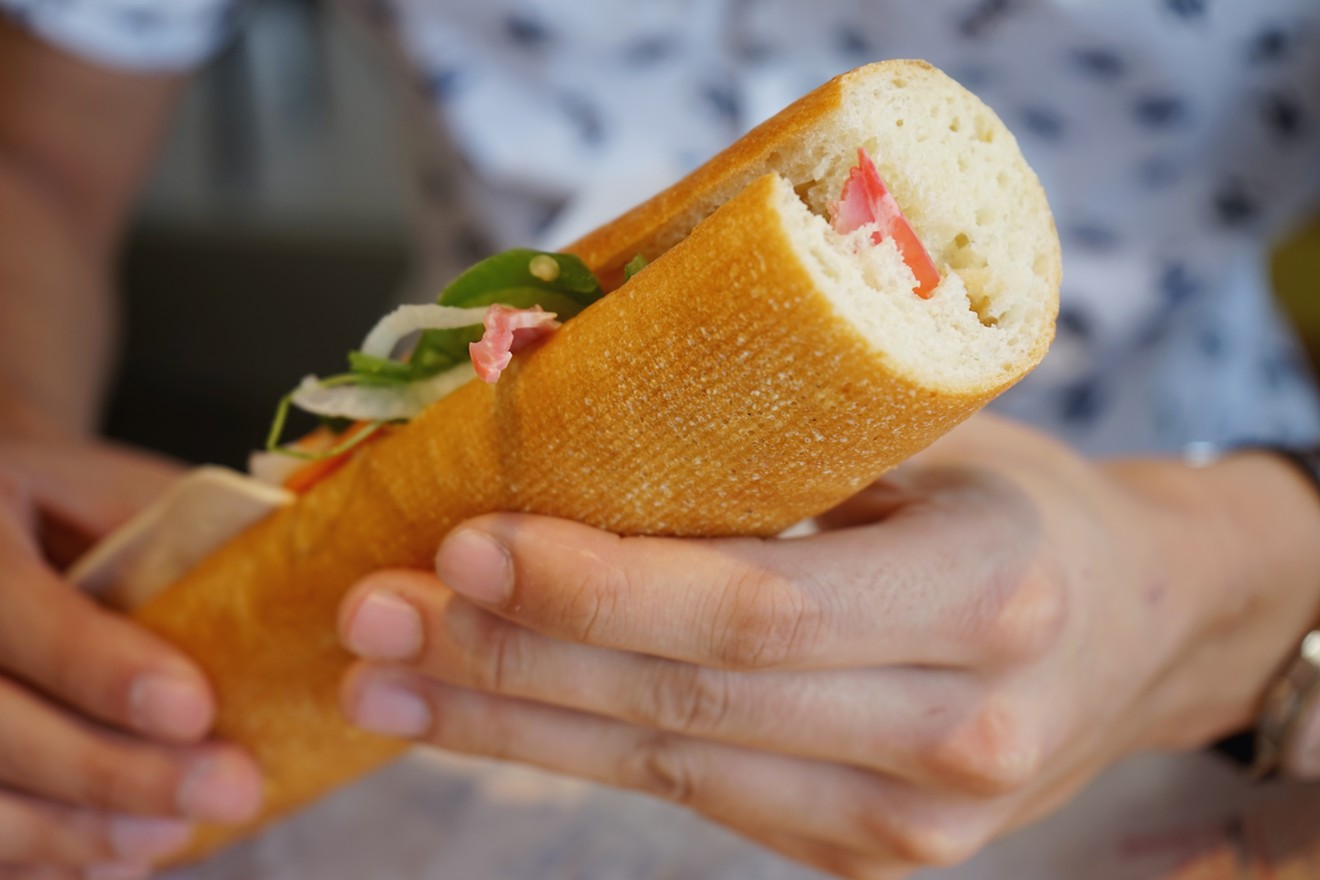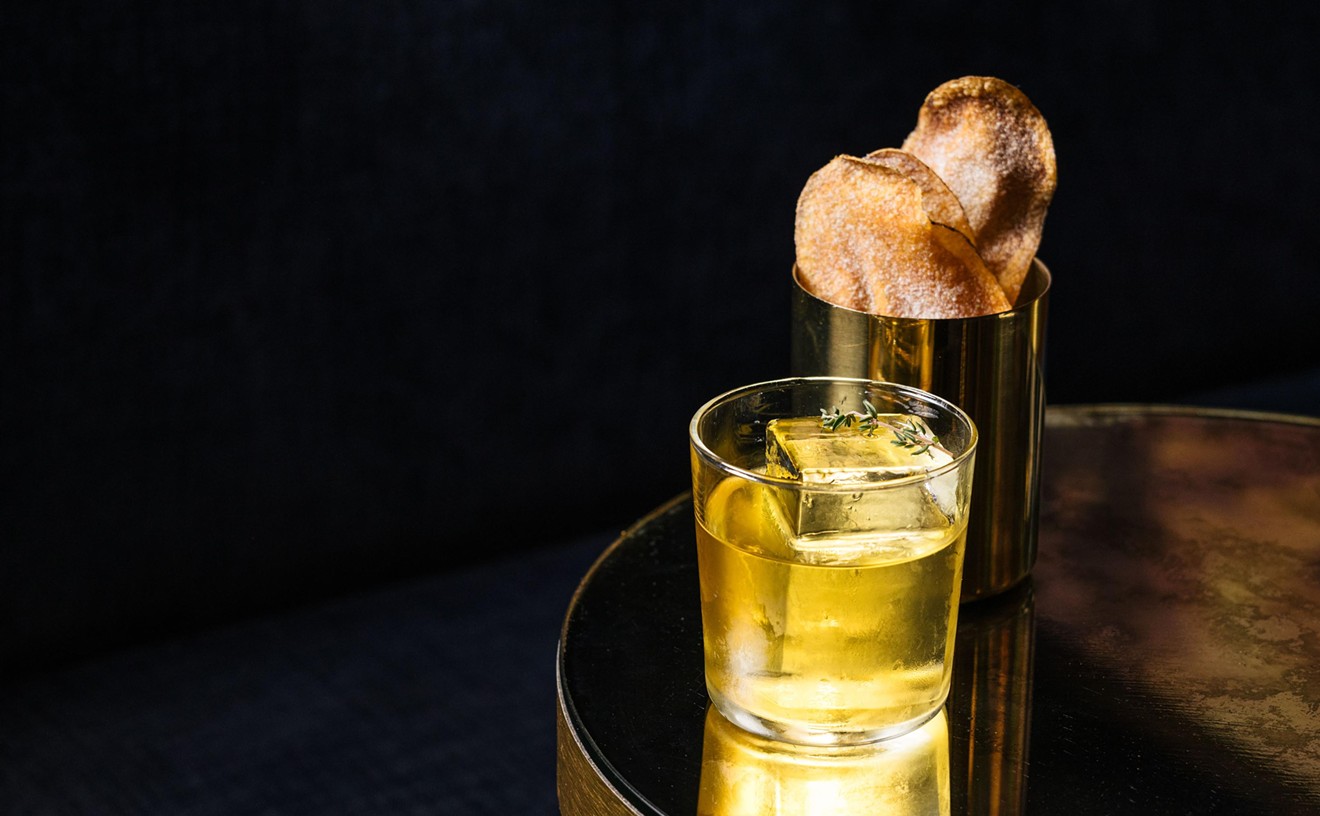Cuisine: Vietnamese
Restaurant Name Keywords: Vietnamese, Pho, Saigon
Menu Keywords: Dac biet, Pho, Banh Mi, Com, Bun
What Is Vietnamese Food?
If there were a single word to describe Vietnamese food, it might be “practical.” Many Vietnamese dishes have emerged from a commitment to use up every last bit of available ingredients and not let anything go to waste. Bones are simmered to make broths; abundant fish and vegetables are fermented to last longer. Very little is tossed out. The resulting cuisine is fresh, economical, and highly creative.
Rice, herbs, vegetables, and meat are at the heart of most meals. Pungent fish sauce is used for dipping or flavoring many dishes. A typical table would boast a colorful array of raw or lightly cooked produce and a variety of textures, from crisp carrots to spongy omelet to rough and crunchy pork skin. Common flavors are salty, sour, and sweet; most Vietnamese dishes are not very spicy.
Because it is loaded with vegetables and doesn’t use much oil or dairy compared to others, Vietnamese food is known as one of the world’s healthiest cuisines. There are some exceptions — like the fried egg rolls and thick coconut-laden curries — but as a whole, Vietnamese cooking is fairly light and nutritious. The well-known soup, pho, is a fantastic remedy for colds (and hangovers).
French colonists occupied Vietnam from 1887 to 1954, and you can see that influence in the food. Vietnamese cooks adapted things like coffee, baguettes, and pâté into their culinary culture, but with local twists. For instance, breads are made with rice flour, and coffee is served with sweetened condensed milk rather than cream.
Vietnamese restaurant names often include references to Saigon, the fallen city that many people had to leave behind. After the Vietnam War, millions of refugees fled their homes for other countries. Vietnamese families make up one of the largest international diaspora populations, with immigrants and their children living all over the world, including here in metro Phoenix.
If you’re ready to take a taste of Vietnamese cuisine, here are five great places to start your search:
Lee’s Sandwiches, Chandler
Go for: The best selection and variety of bánh mì, plus dumplings, coffee, bread, pastries, and a small market with packaged snacks from Vietnam and beyond.
Pho Thành, Phoenix
Go for: A huge and inexpensive menu with several kinds of pho, rice, and noodle dishes, as well as specialties such as yellow chicken curry.
Da Vang, Phoenix
Go for: Standards like pho and summer rolls, and many kinds of pork, seafood. Also: beef dishes with plenty of noodles and rice.
Unphogettable, Mesa
Go for: Egg rolls, Vietnamese chicken wings, pho, and other traditional items. It’s in the same plaza as Mekong Supermarket for easy Vietnamese ingredient shopping.
Bambu, Chandler
Go for: Sweet treats like Vietnamese coffee, milk tea, and 15 kinds of chè (see below for an explanation). Try #10, Bambu Favorite, with red tapioca, grass jelly, pandan jelly, and coconut milk.
Order and Eat Like a Vietnamese Person
Tips: Most Vietnamese menus list items in both Vietnamese and English. Dishes are often numbered, so you can simply ask for 23 or 45 and so on. Look out for dishes labeled “dac biet,” which loosely translates to “house special” or “combo with everything” (the good stuff).
Typically, each table has a large stack of plastic chopsticks and soup spoons. When eating soup or noodle dishes, hold the chopsticks in your dominant hand and use the spoon in your other hand to twirl the noodles or sip the broth. Some dishes, such as meats, may be served with a knife and fork for ease.
STARTERS
Spring rolls (goi cuon): Like a crisp salad stuffed into a rice paper wrapper, the traditional Vietnamese spring roll makes a light and tasty appetizer. The translucent roll is typically served chilled, and a bite into the chewy bundle reveals a slightly crunchy and fresh mixture of greens, mint, chives, shrimp, sometimes pork, and rice vermicelli. Pick it up with your hands and dip it into the accompanying brown peanut sauce.
Egg rolls (cha giò): For a more indulgent starter, try the greasy, flaky, wonderfully crispy egg rolls. The best time to have egg rolls is at a Vietnamese family reunion, when aunts and uncles pull them straight out of the deep fryer and they’re so hot you could burn your tongue. Many restaurants in Phoenix have great renditions of this classic, often filled with pork, shrimp, shredded carrots, mushrooms, or other vegetables, and it’s worth taking a couple to go. Egg rolls keep well in the freezer and taste just as good after a quick reheat in a toaster oven.
Green papaya salad: Vietnamese salads typically do not include lettuce but rather shredded fruits, vegetables, meats, and rice noodles. An example of this is the healthy and pungent green papaya salad, made with finely grated unripe papaya, slivers of carrots, mint, and Thai basil. It’s dressed with a light and mildly sour blend of fish sauce, vinegar, sugar, and soy sauce. Some versions may include shrimp, peanuts, limes, cilantro, and chilis as well. Try it as a starter or side to share with the table.
MAINS
Pho: This humble rice noodle soup, pronounced “fuh” (not “foe”), is the first Vietnamese dish most people see or try here in the U.S. The mark of an excellent bowl of pho is the richness of its beef-based broth (or chicken-based, for pho gà), which is light in color and simmered with bones and aromatics such as cinnamon, star anise, cloves, ginger, and onion. Most menus have several versions of pho with various combinations of proteins, including thin slices of steak, brisket, tripe, and more, and many will also offer small, regular, or large sizes. Before your pho arrives, your server will bring out a plate piled high with garnishes such as basil, cilantro, sprouts, jalapeños, and lime wedges. Toss these in the bowl and top it off with a squeeze of hoisin or Sriracha for taste. Feel free to slurp the long rice noodles.
Bánh mì: The name of this dish literally translates to “bread,” referring to the crusty baguette upon which this sandwich is built. There are tons of variations on this cheap and delicious item, but most renditions include some combination of pickled carrots and radish, cucumber, cilantro, and jalapeños, often spread with mayonnaise or pâté. Grilled pork, meatballs, and pork belly are popular fillings. (Pro tip: Because they are portable and inexpensive, bánh mì make great packed lunches. Stock up on a few at a time, and keep them bagged in the refrigerator. Some restaurants will also put the vegetables on the side, so you can add them in right before you eat and the bread won’t get soggy.)
Com: A standard Vietnamese menu will have an entire section devoted to “com,” or rice plates. (Com tam refers to broken rice, which has smaller grains and a softer, fluffier texture.) These dishes come with the meat you select — perhaps ribs, shredded grilled pork, or lemongrass chicken — as well as sides like pickled carrots, cucumbers, slices of pork meatloaf, and fried eggs. Most places also include a cup of flavorful fish sauce to pour over the rice and a small bowl of broth with garlic and scallions.
Bún: Another large menu section you may find is “bún,” which means rice vermicelli (not buns or dumplings, as one might imagine). Similar to the rice plates, these noodle bowls will accompany a meat (or meats) and vegetable side dishes, plus the cup of fish sauce. Vermicelli is also in many stir-fries and soups, and sometimes it’s pan-fried to crunchy perfection.
Soups: Vietnamese food has a seemingly endless number of soups, sometimes called “cahn.” This staple is an essential part of family meals and special celebrations alike. Unlike pho broth, other soups do not generally require hours of preparation and tend to be lighter, both in color and flavor. Regional and seasonal versions are different everywhere, so see what each restaurant has to offer. Flavors can range from sour to sweet to savory.

Lee's Sandwiches in Chandler has an impressive variety of bánh mì, with more than 15 different kinds of sandwiches available.
Meagan Mastriani
Fish sauce: When in doubt, just pour fish sauce on everything. This is only a slight exaggeration. The transparent, amber-tinged dipping sauce comes with just about all Vietnamese dishes, and it can pump up even a simple serving of plain white rice with delicious salty and slightly sweet flavors. Some restaurants may add garlic, vinegar, lemon/lime juice, or peppers for sour and spicy notes. Try dipping a bit of egg roll in it or spooning it over meats. (A note: Most restaurants serve this mixed dipping sauce in a small cup or bowl accompanying dishes. If you find a bottle at your table labeled “fish sauce,” it could be the concentrated stuff not cut with water, sugar, or juices. Approach with caution.)
Sriracha: Sriracha sauce is everywhere these days, thanks in part to David Tran, the Vietnamese-American founder of Tuong Ot Sriracha, and his rooster-adorned squeeze bottles. It’s customary to mix Sriracha into pho, but we recommend you go slowly and at least taste the broth before saucing it up. Once you turn your bowl of soup into a spicy red mess, it’s harder to detect and savor the deep flavors underneath.
Hoisin sauce: Yes, this is the same thick, brown condiment you may know from Chinese cuisine, but it’s worth mentioning because hoisin sauce is on just about every table in Vietnamese restaurants. Add the salty-sweet sauce directly to your bowl of pho (in conjunction with Sriracha) or use it as a dip for the meats from the soup.

A com plate at Unphogettable in Mesa comes with pickled carrots, egg rolls, grilled pork chops, and fish sauce (bottom center).
Meagan Mastriani
Vietnamese coffee (cà phê dá): When bitter, dark roast drip coffee meets sweetened condensed milk, magic happens. Vietnamese coffee is so sugary it might make your face tingle (in a good way) and so strong it will definitely jack you up. It’s thick, addictive, and especially great over ice.
Chè: Somewhat like pudding, chè may be best described as a cold dessert soup. It’s hard to define this sweet drink in precise terms as it encompasses a huge variety of styles and ingredients. Most often, you’ll see it in a tall glass with a rainbow of layers like mung beans, tapioca, jellies, and fruits like mango and lychee. Coconut milk and coconut juice are common additions as well.
Learn More About Vietnamese Cuisine
To really appreciate a cuisine, it is often quite enlightening to try your hand at cooking a dish or two. When it comes to Vietnamese food, the YouTuber and cookbook author Helen Le is a great resource. Browse her channel for videos covering a broad range of recipes and cooking techniques. (Bonus: Her voice is so soft and soothing, it’ll make you feel totally comfortable trying something new.) Look up a recipe and then head to Lee Lee International Market in Chandler or Mekong Supermarket in Mesa to pick up your ingredients.











